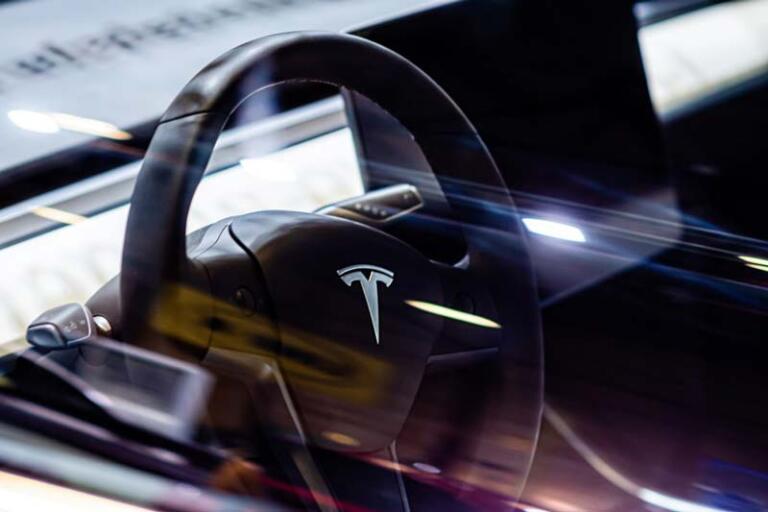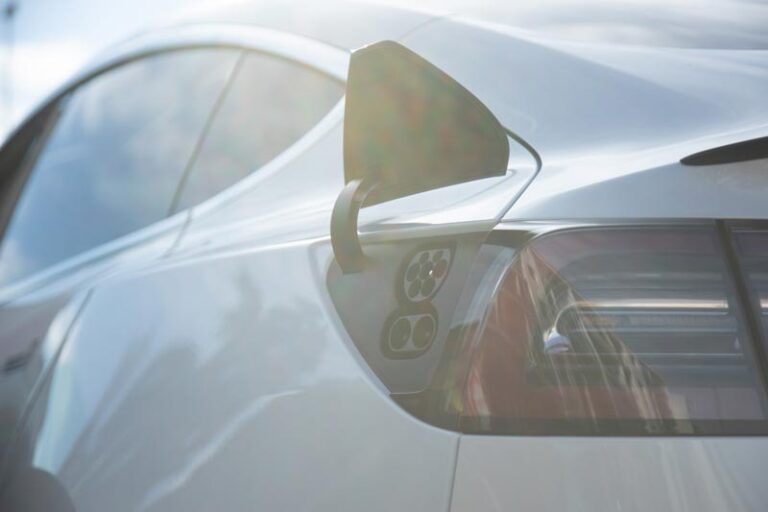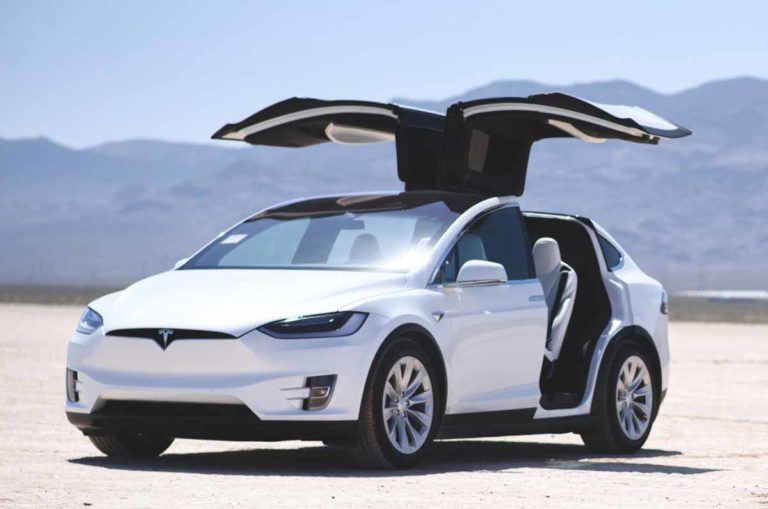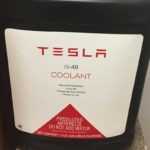Tesla is making headlines with its electric car battery technology. Not only are they building cars, but they are also designing batteries with built-in cooling systems, making them more cost-efficient and easier to maintain.
So, let’s discuss how a Tesla keeps its battery cool. I’ll talk about why it is necessary to cool your EV’s battery and teach you how to keep your battery from overheating.
- How Does A Tesla Keep Its Battery Cool?
- Why Do Tesla Batteries Need a Cooling System?
- How Hot Do Tesla Batteries Get?
- Tesla Model S Battery Comparison with Other EV Battery Types
- Are Tesla Batteries Water Cooled?
- What Is the Liquid Cooling System in a Tesla?
- Do Teslas Cool Their Batteries Automatically?
- Do Electric Vehicles Overheat?
- Is Hot Weather Bad for Electric Cars?
- Do Teslas Have Radiators?
- Can You Drive a Tesla in the Winter?
- How To Warm A Tesla Battery
- What is a Coolant Tube?
- EV Speedy's Take
How Does A Tesla Keep Its Battery Cool?
Tesla batteries are cooled by a liquid-to-air heat exchanger that circulates through the battery cells. This device transfers heat from a liquid into the air using convection or forced airflow. The coolant is a mixture of water and ethylene glycol, which is also used in antifreeze.
The batteries in a Tesla have to be kept at a constant temperature to ensure that they can perform adequately.
I went into further detail in this article that I wrote called: What Kind of Coolant Does Tesla Use? In this article, I discuss how exactly the Tesla cooling system works and provide you with all the relevant Tesla Coolant Specs. Check it out!
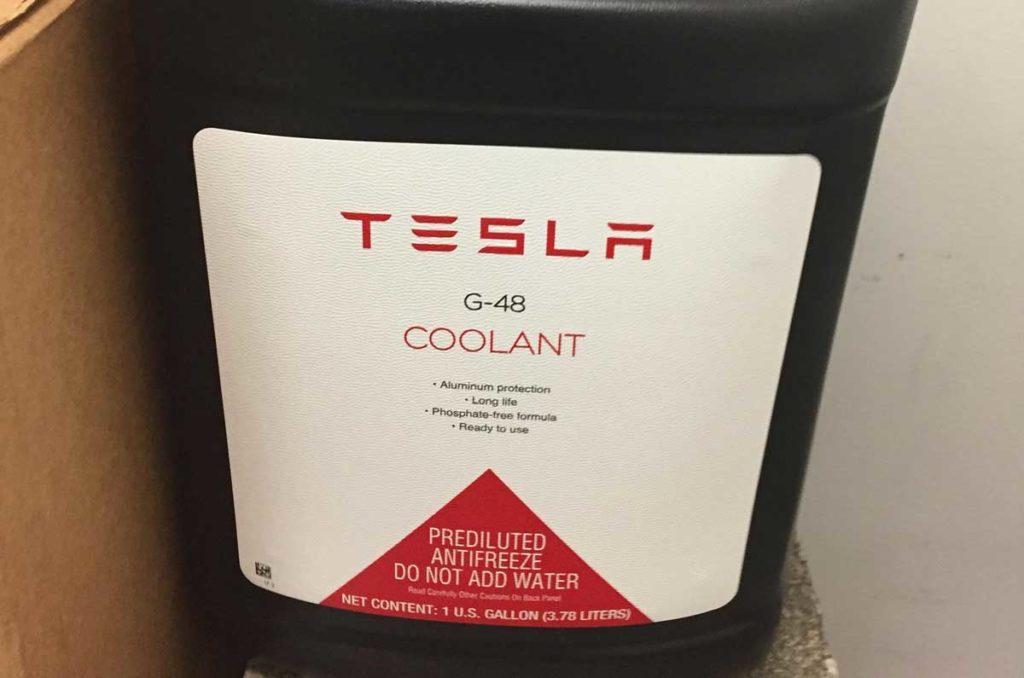
The cooling system for Tesla batteries consists of a pump, a heat exchanger, and an expansion tank. The pump circulates the coolant through the battery cells to remove heat from the cells.
This cooling process takes place inside the Tesla battery pack, where glycol circulates through pipes and absorbs the waste heat generated by the cells during charging.
The glycol then flows through an external radiator, releasing its heat into the ambient air.
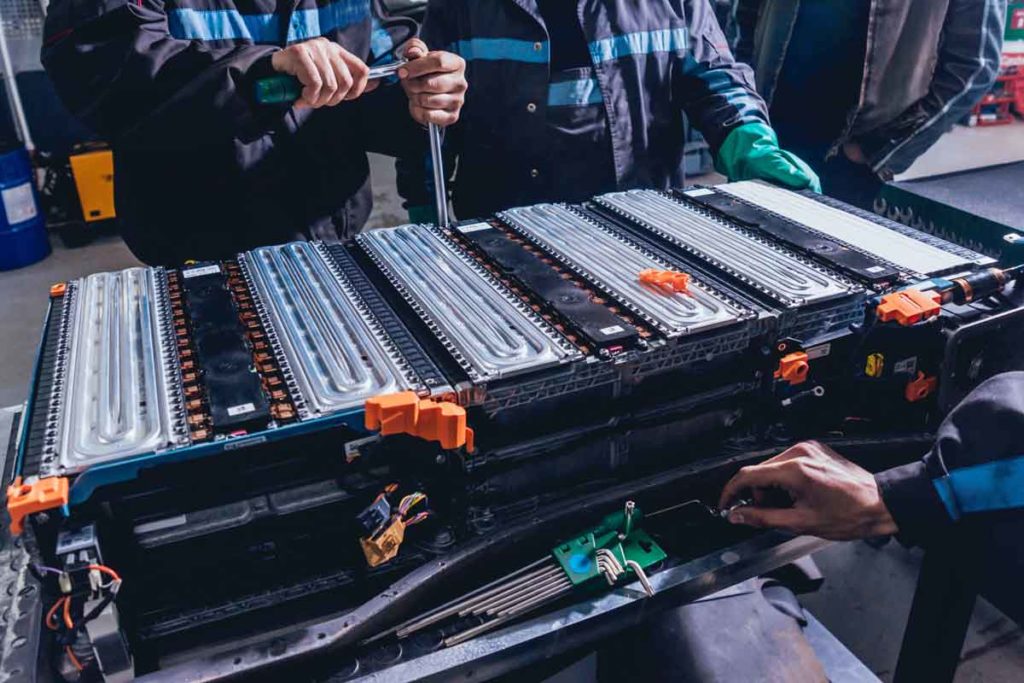
Why Do Tesla Batteries Need a Cooling System?
Tesla batteries need a cooling system to keep the battery working at peak performance. Thermal regulation is necessary for batteries because they give off heat. As a result, they need a powerful cooling system to prevent damage from overheating.
Tesla battery packs are rated for a specific temperature range. If the temperature goes over that range, the battery will fail.
The battery pack contains thousands of lithium-ion cells. They are connected in an alternating pattern to form modules. These modules have built-in cooling systems to keep the cells within their suitable temperature range.
How Hot Do Tesla Batteries Get?
Tesla batteries can get as hot as 131 °F (55 °C), although this temperature is when the battery overheats. The average temp for a fully charged Tesla battery is 104 °F (40 °C).
When you plug in your car or charge it with a high-voltage home charger, the battery begins to heat up as it stores electrical energy.
The hotter the battery gets, the more efficient it is for storing electricity, at least up to a certain point.
Tesla Motors has a patented cooling system that keeps the batteries at optimal temperatures. Some people think that Tesla batteries get hotter than traditional car batteries, but this is not the case. Tesla’s batteries operate at a temperature lower than most standard EV batteries.
Tesla Model S Battery Comparison with Other EV Battery Types
Tesla batteries are efficient, and they are currently paving the way for better, more long-lasting EVs.
| Electric Vehicle | Battery Energy Capacity (kWh) | AC/DC Charging Power (kW) | Time to Fully Charge | Driving Range (mi) |
| Tesla Model S | 85 | 10/120 | 40 mins | 412 |
| Nissan Leaf | 40 | 7.7/50 | 4 hours | 149 |
| Ford Focus Electric | 33.5 | 6.6/50 | 4 hours | 115 |
| BMW i3 | 22 | 7.4/50 | 30 mins | 81 |
| Chevrolet Spark | 18.4 | 2.3/50 | 25 mins | 82 |
So, as you can see, Tesla Model S vehicles have some of the largest batteries with the most extended driving range. However, they reach maximum charge faster than most EVs.
Are Tesla Batteries Water Cooled?
Tesla batteries are not water-cooled. Tesla’s large-scale battery packs are liquid-cooled with an aqueous glycol-based solution. This coolant is toxic, biodegradable, and has a much lower environmental impact than the typical petroleum-based coolant.
A popular misconception is that Tesla battery packs are water-cooled. In reality, glycol flows through the battery cells to keep them cool.
What Is the Liquid Cooling System in a Tesla?
The liquid cooling system in a Tesla is both efficient and innovative. Their sophisticated cooling system involves pumping an electrically-conductive, water-based fluid around the car’s many heat-sensitive components to keep its electric parts cool.
The liquid cooling system in Tesla is a closed loop that circulates water and glycol to cool the battery and power electronics. The system will maintain the battery below 35º C (95º F), the optimum operating temperature for lithium-ion cells.
The coolant runs through the battery pack, where it absorbs heat from the cells and transfers it to a heat exchanger. The heat exchanger then transfers the heat to the air, which dissipates it into the atmosphere.
The main reason for using a liquid cooling system is to allow the electric car to operate without a fan. Fans malfunction a bit more, and they can also be quite loud, so liquid is usually the best option.
The liquid cooling system in Tesla is one of the many reasons electric cars are better than gas-powered vehicles. There are fewer chances of malfunctions with the ability to keep the car cool and fueled in a circuit-like loop. That means less money and time spent on repairs!
Do Teslas Cool Their Batteries Automatically?
Teslas cool their batteries automatically. The Tesla cooling system can manage itself, providing your battery with a lower temperature to balance the amount of power drawn from the batteries. Auto cooling can maximize range, save energy, and prevent damage to the cells.
A temperature-controlled battery will result in longer battery life. Cooling the battery will not only stop it from draining as quickly, but it will also make it last longer. A car’s battery has a finite number of cycles before you’ll need to replace it, and overheating it can cause rapid aging and death for the cells.
When batteries are cool, their performance is better, and you can charge them faster. That is why most electric cars have a built-in system for cooling their batteries during times of heavy use, like when driving in hilly terrain or hot weather.
Do Electric Vehicles Overheat?
Electric vehicles can overheat, just like any other vehicle. The difference is that an electric car is more efficient and does not use up as much energy as quickly. So while they can overheat, they heat up at a fraction of the rate that gas-powered cars do.
While electric vehicles may not be as standard as their gas-powered counterparts, they may be a better solution for the future. If a car does overheat, it will shut off automatically and need to cool down before being used again.
Tesla has been using lithium-ion batteries for a long time without any problems arising from heat. Lithium-ion batteries were a great innovation that helped save the company because they could hold up against extreme heat much better than other batteries.
Is Hot Weather Bad for Electric Cars?
Many people worry that hot weather will be bad for electric cars, but they need not be concerned.
Hot weather can be bad for electric cars, but EVs like Teslas have cooling systems to protect your battery from overheating. Electric car batteries function in any type of weather, and even if it does overheat, the vehicle cools itself down without damaging the battery or the car.
Different electric cars have different levels of efficiency. Tesla Motors, for example, produce a much higher level of efficiency than other electric cars.
The type of climate you reside in also plays a role in your electric car’s efficiency. For example, it is less expensive for people living in cooler temperatures to charge their electric cars because they won’t need to fuel up for the cooling system.
What Is Tesla Chill Mode?
The mode will reduce the number of torque surges and provide a smoother experience for riders. Acceleration is capped at 37 miles per hour (59.54 kph).
Chill Mode has nothing to do with temperature, but rather “chilling” in your Tesla during a peaceful drive.
Do Teslas Have Radiators?
Teslas, being electric vehicles, operate differently from traditional combustion engine cars. They do not have the same type of radiator system you would find in a gas-powered vehicle.
Instead, Teslas use an advanced cooling system designed specifically for their electric components.
Electric vehicles like Teslas generate heat from the battery pack and various power electronics while in operation. To ensure that these components stay within their optimal temperature range, Tesla vehicles use a liquid cooling system. This system circulates a special coolant fluid through the battery pack, power electronics, and motor to regulate their temperature.
Although there isn’t a conventional radiator like in traditional cars, Teslas still have cooling elements to dissipate the heat generated during operation. They may have heat exchangers or cooling fins to transfer heat away from the components and maintain their efficiency.
So, while Teslas don’t have radiators in the traditional sense, they do have cooling systems specifically designed to keep their electric components running smoothly and prevent overheating.
Can You Drive a Tesla in the Winter?
Driving a Tesla in the wintertime can be challenging. There are few things more frustrating than looking at your car and seeing it covered in snow, ice, slush, and salt. Cold temperatures can reduce the car’s range and increase the energy needed to drive.
Luckily, Tesla provides a few ways to combat this problem. All Teslas are equipped with a heating system to keep the car at a high enough temperature to operate correctly.
You can drive a Tesla in the winter, although you will need to warm up your car before going anywhere. In addition, you may find that your battery does not last as long in cold temperatures, so be prepared for a recharge.
Like iPhones, Tesla’s charge their batteries with a power source. Your Tesla can also use that power source to heat the battery pack in cold weather. However, that means that your Tesla will spend some power on heating itself up, which means that it’ll need a recharge more frequently in cold temps.
Also note that, although your battery can handle the winter well, your tires might not. If you live in an area where the weather gets extreme in winter, with a lot of ice and snow, you’ll have to install winter tires on your Tesla. These will prevent you from skidding across slippery cold surfaces.
How To Warm A Tesla Battery
If you’re looking to warm up the battery in your Tesla, there are a couple of things you can do.
Keeping the battery at an optimal temperature can help improve its performance and efficiency, especially in colder climates. Here are a few methods you can try:
1. Preconditioning
Tesla vehicles often come with a feature called “preconditioning.” This feature allows you to warm up the battery and cabin before you even start your journey.
Using the Tesla mobile app or the car’s touchscreen, you can schedule the preconditioning to start at a specific time. This way, when you’re ready to hit the road, the battery will already be at a comfortable temperature.
2. Charging
Charging your Tesla can also help warm up the battery. When you plug in your vehicle to charge, the battery management system will actively regulate the temperature.
This process may generate some heat, which can warm up the battery. So, if you know you’ll be driving soon, you can consider charging your Tesla beforehand to help raise the battery temperature.
3. Keep Your Tesla Plugged In
If you have the option, keeping your Tesla plugged into a power source can help maintain the battery’s temperature.
Teslas are equipped with a thermal management system that actively monitors and adjusts the battery temperature when connected to a charger. This way, the battery stays within an optimal temperature range, even when the outside temperature is cold.
It’s important to note that Tesla vehicles are designed to handle a wide range of temperatures, and the onboard systems are configured to protect the battery from extreme cold or hot conditions. So, while warming up the battery can be beneficial in colder weather, it’s generally not something you need to worry about on a daily basis.
What is a Coolant Tube?
A coolant tube, also known as a coolant line or coolant hose, is a component of a vehicle’s cooling system. It is a tube or hose that carries coolant, a specialized liquid used to regulate and dissipate heat, throughout the engine and other components that require cooling.
The primary function of a coolant tube is to transport the coolant from one part of the cooling system to another. In an internal combustion engine, the coolant absorbs heat from the engine block and other hot components and carries it away to a radiator, where the heat is dissipated into the surrounding air.
Coolant tubes are typically made of rubber or reinforced plastic materials that are resistant to heat and chemicals found in the coolant. They are designed to withstand the high temperatures and pressures generated by the engine’s cooling system.
Coolant tubes are often shaped and fitted to specific locations within the engine compartment, connecting various cooling system components such as the engine block, radiator, water pump, and heater core.
By circulating coolant through the engine, a coolant tube helps regulate the temperature and prevent the engine from overheating. It plays a crucial role in maintaining the engine’s optimal operating temperature and ensuring efficient cooling throughout the system.
It’s worth noting that in the context of electric vehicles like Teslas, which I mentioned earlier, the term “coolant tube” may not be as common because their cooling systems may use different components and configurations. However, the basic principle of circulating coolant to manage heat still applies, albeit with some variations in design and terminology.
EV Speedy’s Take
In the future, we will see more electric cars on our roads. As technology improves and demand grows, prices will come down to make these cars a more affordable option for everyone.
If you are interested in learning more about Tesla batteries and other advancements in clean energy, check out our other blog posts!
On a similar note, I also wrote a related and more detailed article about Tesla in Hot Weather: Does Heat Affect Range? Check it out!
Check out these 20 great gift ideas for yourself or a Tesla fanboy.
Contact Us if you have any questions or queries.


